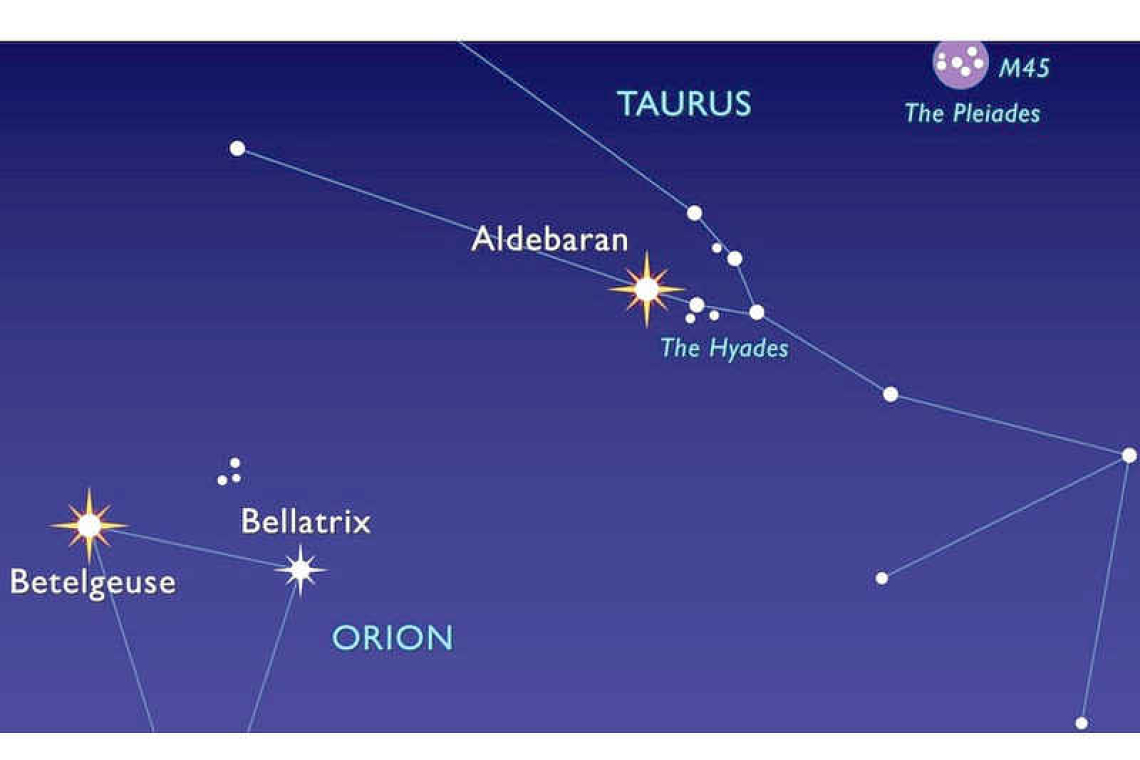~ St. Maarten’s Backyard Astronomy for February 17 - 19, 2023 ~
Sun rises at 6:37am
Sun sets at 6:14pm
Lunar phase: 1st quarter, waxing crescent
Moon rises at 5:18am
Moon sets at 4:39pm
This weekend, the sky is dark, the moon is slim, and the stars will be bright. Let’s take advantage of this and focus our eyes on seeing a variety of colours among the visible stars. Have you ever paid attention to their various hues? Let’s explore some of the stars that you’ll see flickering against the black backdrop of night in winter. In fact, there’s a whole spectrum of star colors sparkling up there. The color indicates the star’s temperature. It may be counter-intuitive, but the hottest stars are blue! Red stars are the coolest and yellow or golden stars are intermediate in temperature.
To note the subtle differences in the colour of the stars, first let your eyes adjust to the darkness. Give yourself at least 5 minutes of darkness so the pupils open up nice and wide. No phones or flashlights!
Let’s start by looking high overhead just after sunset for the Winter Circle. First off, we are looking for a bright star named Capella, in the constellation of Auriga the Goatherder. Once you find it, notice that it’s a golden star.
Let’s stay with our Winter Circle and look over at the constellation Taurus the Bull. The reddish star Aldebaran is the Eye of the Bull, and at the edge of Taurus you’ll find the Pleiades cluster. These tiny stars are bluish, can you discern the color differences?
Next, look lower in the sky for Sirius – the sky’s brightest star. It’s described as a white star, do you see it?
Still in our Winter Circle, check out Orion the Hunter. The red-orange star, Betelgeuse, marks one shoulder, while the blue star, Rigel, sits at his opposite foot. Interestingly, most of Orion’s stars are very hot, blue-white stars.
You may notice some stars with a pronounced twinkle. That is due to the star’s light passing through the earth’s atmosphere. The effect becomes most prominent when the star is near the horizon as the light passes through more atmosphere than when it is high up in the sky. By the way, Capella and Sirius often flicker a lot when low in the sky.
A star’s true colors are more easily seen when they are higher in the sky. So, if you have good eyesight and a dark, clear sky, you should see the colors of most of the brighter stars. Still struggling? Here’s a hint: look at the bright stars through binoculars and if the color is still difficult to discern, put the star out of focus in your binoculars so the color will become more obvious. Good luck!
Thank you for keeping up with the Night Sky articles, backyard astronomy designed for St. Maarten sky viewing. FYI: If you are out later on in the week, note that each star rises about four minutes earlier each day than written here, and the moon rises 50 minutes later. Night Sky is researched and compiled by Lisa Davis-Burnett. Earthsky.org is a key resource for information and images. Questions or comments? Email This email address is being protected from spambots. You need JavaScript enabled to view it.







